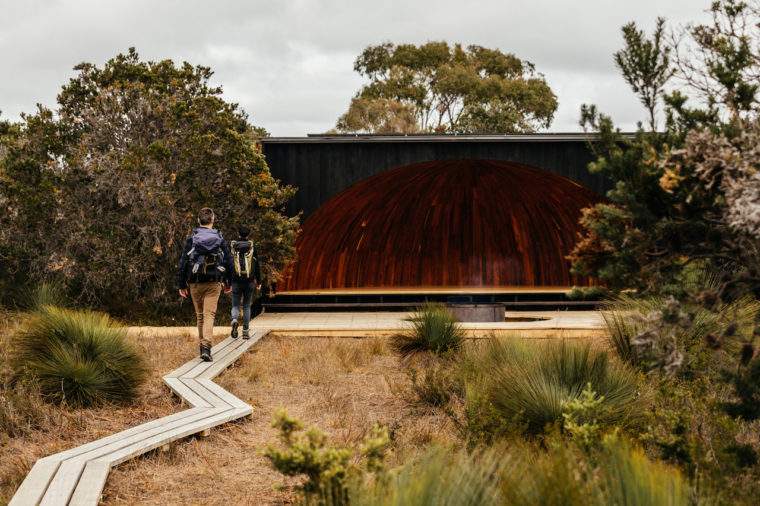Originally published 4 December 2018: https://www.thefifthestate.com.au/innovation/architecture/views-from-the-world-architecture-awards/
Brisbane based architect Mark Thomson has just come back from judging a segment in the World Architecture Festival in Europe. While he was there he also gave two presentations to the UN General Assembly in Geneva and had a big look around at what countries on the far side of sustainability are doing on the ground. He’s feeling humbled.
On the one hand, the Aussies did very well with the awards, particularly in timber and prefabricated construction.
On the other hand, the Europeans are leaving us in a trail of carbon dust, in part due to the take up in some countries of specific rating tools for materials related to building and many other uses and in transport.
The awards, he told The Fifth Estate this week, were “inspirational…amazing, and very humbling. The best of the best.”
As a judge in the category of best use of certified timber, he was able to examine closely the nine finalists and struggle along with the other judges on the tough job of elimination.
One project was outstanding – a timber building created for the Milan Expo and now submitted in its new iteration as a refugee school in Lebanon. A fabulous example of flexible design and many other sustainability features to its credit, but in the end eliminated because perhaps it was more suited to the recycled category.
The winner of the Use of Certified Timber Prize, supported by the Programme for Endorsement for Forest Certification (PEFC), was International House in Sydney by Tzannes.
“It was fantastic to see it in the international context. You might have thought timber is pretty commonplace in Europe and at a smaller scale it is but not in the scale we’ve achieved in Australia.
“The buildings that are happening at Barangaroo and the larger ones proposed around the country and including 25 King Street in Brisbane [already constructed; see our article here] appear to be breaking new ground on spans and in engineering such as fire ratings – that’s my personal opinion.
“There are some amazing timber buildings in Canada and in Scandinavia in particular, but as you come down to more tropical and sub tropical areas it would appear that CLT (cross laminated timber) is getting real traction because it’s prefab and that’s a cost saving and a time saving.”
As with many other technologies, you could argue that using timber is not a new technology at all but it’s the way of doing timber construction is new and with its costs are coming down much the same as they have for photo voltaic solar power.
Travelling around Europe, particularly on a train, Thomson noticed “massive wind farms and massive solar farms and the whole renewable energy push we’re only just starting to see in Australia.”
It was a big change from his last trip 15 years ago.
Among the everyday sights especially in Amsterdam, Berlin and Vienna were micro cars, “like I’ve never seen before, most electric and a huge number of electric cars.”
Hyundai has a fully electric car, so do Mercedes and Porsche.
“What surprised me most was the sustainability entrenched in architecture. I know architects say sustainability is embedded in everything they do,” he says, but in Europe you see a particular “depth of sustainability fully integrated in major projects and minor.” It’s a stark contrast.
As an architect, what does he suspect is the difference?
In these European cities, he says, but in regional cities as well, he could see that sustainability seemed to be embedded simply as a way of life. So that “going to the supermarket and to the local shops and using local transport, it’s all there.”
This included certified and sustainably branded products from building materials to textiles.
“Labelling in supermarkets is particularly strong with sustainable branding.”
This, “in the same way that in Australia we label ‘fresh’ and ‘environmentally friendly’ products: what I call a fair degree of greenwash.”
Timber in buildings, cladding and clothing fabrics
Thomson noted in particular high use of timber products in garments particularly cellulose, viscose and lignum.
This kind of thinking, he says, provides a great opportunity for a low carbon reality.
“If we have timber structures, timber cladding and now timber fabrics, we’re starting to close the gaps in terms of carbon awareness of the environment generally and also an understanding of how carbon products are directly related to our world.”
Bio plastics are also starting to make a strong showing, Thomson says.
Certainly the car industry is “the one to watch” he says. “Not only is it transforming from petrol to electric but many of the components inside the car are renewable.”
The size of the cars is enough of a symbol: half the size of regular cars. He noticed two main brands: the Micro and the Canta, and in Amsterdam they are small enough to be allowed to share the cycleway; which then makes the cycleways a bit more of a challenge.
Thomson’s paper to the UN on the challenges of timber was timely for Australia given the recent voluntary receivership of Strongbuild in NSW but with supporters of the timber and prefab industry saying the industry is growing in leaps and bounds.
“Timber is probably the most sustainable material on the planet,” Thomson says, “especially if you compare the lead time to grow timber compared to growing coal or concrete.”
And timber too has longevity, he says. For instance, Perry House in Elizabeth Street at the corner of Albert Street in Brisbane is an eight storey timber-framed building built in the 40s but clad with brickwork so not many people are aware it’s got a hardwood frame that’s close to steel in strength and longevity.
“The thing that’s occurred with CLT and the work that Lendlease and others have done is to the technical solution to give timber its fire rating.”
And that makes a big difference, he says.
Another building that won a commendation at the World Architecture Awards was a building in north-east Tasmania known as krakani lumi (place of rest) at Wukalina by Taylor and Hinds Architects for the Aboriginal Land Council.
As a director of Australian Forestry Standards, also known as Responsible Wood, Thomson was considered by his fellow judges as adding greater than usual insight into the task at hand.
On the broader challenges of timber, he feels Australia is not growing enough and right now we’re importing timber that is cheaper partly because it’s not certified. It’s also not as durable and suitable as the quality from home grown product, he says.
The importation, he says, “is an economic issue, nothing else.” Australia could well grow enough timber for its needs.
The development of the industry has been slow. In 2000 he built his own largely timber home in the confidence that the material would skyrocket as a market segment, but it’s only just now starting to take off.


